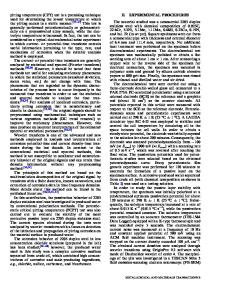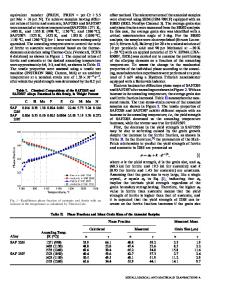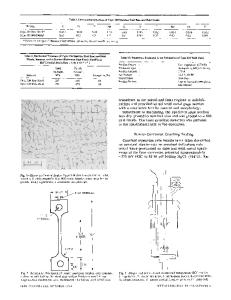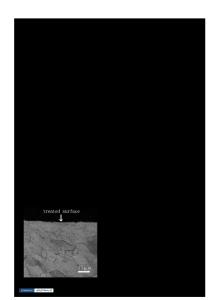Surface preparation effect on duplex stainless steel passive film electrical properties studied by in situ CSAFM
- PDF / 690,067 Bytes
- 9 Pages / 584.957 x 782.986 pts Page_size
- 9 Downloads / 334 Views
e effect of surface preparation—grinding, polishing, and electrochemical etching—on the duplex stainless steel passive film conductivity was investigated by in situ current sensing atomic force microscopy. The current maps show that the current in the passive film on three prepared surfaces is different, especially for the ferrite and austenite phase surface. The current on the austenite and ferrite is similar on either mechanical ground or polished surfaces, but the current on the austenite surface is much higher than current on the ferrite surface after electrochemical etching. The difference in the passive film conductivity originates from the changes in the chemical composition and thickness of the passive film and the change in topographical properties induced by the preparation procedures. This is confirmed by AFM, x-ray photoelectron spectroscopy, and auger electron spectroscopy measurements.
I. INTRODUCTION
The corrosion resistance of stainless steels is closely related to the passive film on their surfaces. Understanding of passive film electrical properties is a key factor for protection of stainless steels against localized corrosion attack, as the electrical characteristics of the passive film play an important role in the film breakdown mechanism.1–5 Several studies at the macroscopic scale have shown that the passive films formed on stainless steels exhibit semiconducting behavior and have n- or p-type semiconducting properties.6–9 Chemical and electronic structures of passive films are unlikely to be uniform along the stainless steel surfaces, especially for duplex stainless steels. This is because of a combination of austenite and ferrite phases with a complex microstructure, leading to the differences in corrosion resistance between the two phases.10–12 The conductivity of passive film varies depending on parameters, such as film thickness and stoichiometry.13,14 Due to the fact that the localized corrosion is closely linked to surface preparation,15–17 it should be considered another important parameter that affects the passive film properties. Therefore, the surface heterogeneities induced by the surface preparation should be identified and characterized to clarify the role of passive film electrical properties change in relation to the localized corrosion. However, it is difficult to detect such microscopic defects on the passive film surface using classical
method at a macroscopic scale. The current sensing atomic force microscopy (CSAFM) is a valuable tool to characterize submicrometer change in electrical properties of the passive film with high spatial resolution.18–20 The present study aims to investigate the electrical properties of passive films on duplex stainless steel as a function of surface preparation (grinding, polishing, and electrochemical etching) by using CSAFM. The x-ray photoelectron spectroscopy (XPS) and auger electron spectroscopy (AES) were used to characterize the passive film structure and chemical properties on the surface prepared by different surface preparation procedures. II. EXPERIME
Data Loading...










